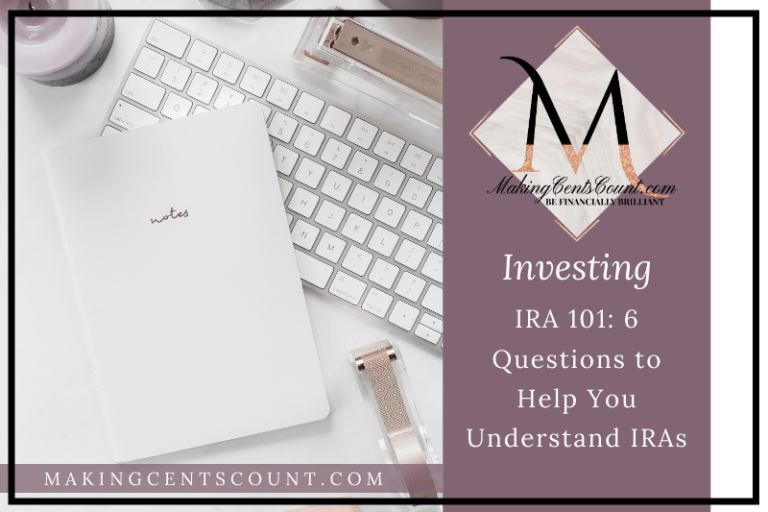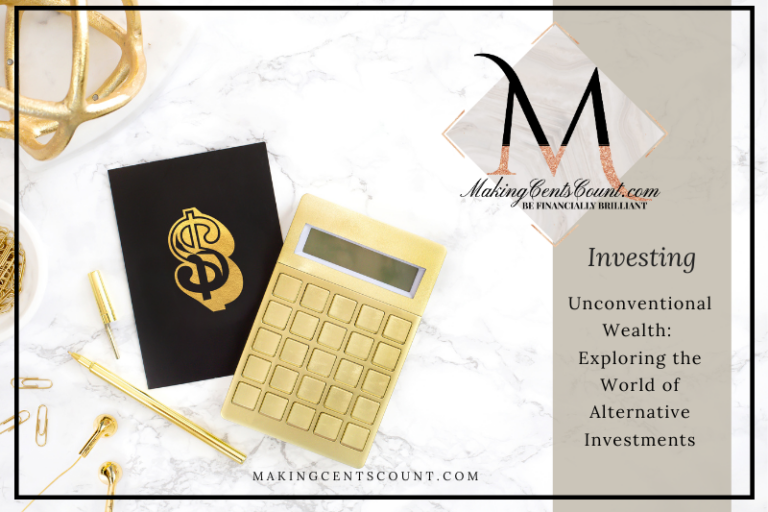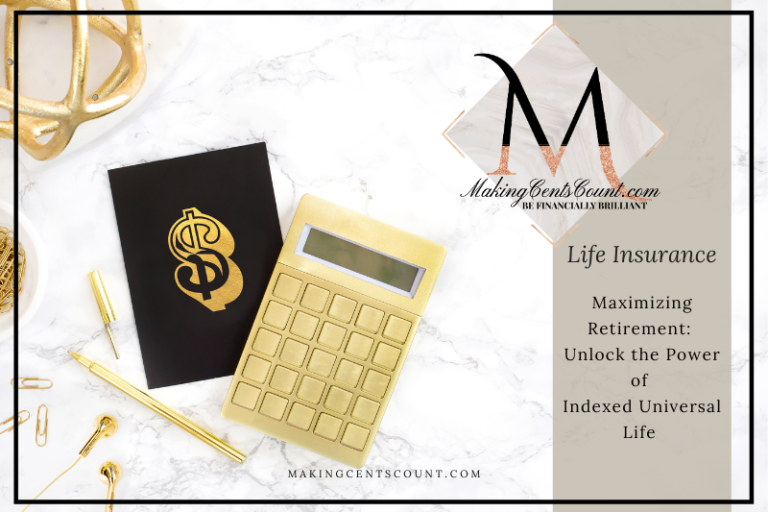6 Ways To Understand If Your Investment Risk Tolerance Is Holding You Back
Estimated reading time: 10 minutes
What does your investment picture look like? Are you comfortable with the way your money is working for your future security, or is your investment risk tolerance holding you back from positioning your money to grow?
It’s natural to have fears when it comes to investing in your finances. I’ve found in investing, as, in life, the majority of our fears stem from what we don’t know or don’t understand. When we wrap our head around the vast array of investment options available to us, we realize there are so many sound choices out there.
So, if you’re ready to put your money to work, then it’s time to dive in and explore your risk tolerance. Here are six ways to understand your investment risk tolerance to help you invest wisely and comfortably.
Table of Contents
Are you ready to start investing, control your finances, and prepare for retirement? Join our amazing community! You’ll receive exclusive financial tips from Making Cents Count, as well as unlimited FREE access to our resource library full of money-saving tools and guides.
If You’re Holding Back, Stop! Why You Should Invest in the First Place…
You may have heard the slogan, “buy term life insurance, and invest the difference.” While this is a great recommendation, rarely does anyone actually invest the difference.
Instead, what happens when we get a windfall is we go out and buy a boat (or something extravagant). I speak from experience because I’ve bought the boat!
I often use my story when I’m speaking to investors. Years ago, instead of investing my money as I should, it was easier—and clearly more fun—to buy something bright, new, and shiny. In fact, I avoided the whole “investing thing” altogether.
Self-Reflection + Your Investment Risk Tolerance
As I got older, thankfully, I grew up a bit and I realized my mindset needed to change. It was time to move out of my immediate gratification stage of life and shift into a stage where I focused on my future (and ability to retire someday). During the process of shifting my mindset, I did a lot of self-reflecting and worked to find out my “why.” Why wasn’t I investing my money? Why didn’t I see it as a priority in my life?
In the end, I realized I was afraid. At the time, I simply didn’t understand investing or investments. My fear of the unknown was keeping me from investing. I was scared of taking a risk and ending up with nothing to show (spending on extravagant “wants” seemed more tangible). I simply didn’t understand my investment risk tolerance.
Now, of course, many years later, I understand investing very well. But when I work with clients, I often share this personal story, because I think many people can relate. We often hold back from sound financial decisions because we don’t understand what’s on the line. We’re afraid of the unknown.
With that idea in mind, here are six ways to explore your fears about investing and understand your investment risk tolerance.
1. Explore the Root of Your Comfort Level
My goal is to help you understand the root of where fear-of-investing originates. Once we know the source of the fear, it’s much easier to get to a place where you feel confident with your investment knowledge.
How comfortable are you with risk? Are you the kind of person who saves for a rainy day? Are you the type of person who lives paycheck-to-paycheck?
It’s also helpful to explore what your financial picture looks like in the first place. Do you follow a budget? Could you cover something unexpected? Have you put away money for retirement and your future needs?
It’s essential to get an overview of your financial picture. This applies whether you’re focusing on the short-term or the long-term. To be financially successful, you need to understand your comfort level and to assess where you fall within the investment risk tolerance spectrum.
Not only does this understanding help you know where you should invest, but it enables you to understand where you need to educate yourself. If you identify which aspects of investing are scary, or which areas you don’t understand, clearing them up is easy! You’ll feel prepared for informed decisions about your investment choices moving forward.
2. Remember You Know Yourself Best
So, how do you know what’s the best way to invest? Well, first, rest assured there is no right or wrong way to invest. It’s all based on your personal preference and lifestyle—meaning, your investment risk tolerance. Factors like your personality, your current financial picture, your desired retirement date, what your retirement looks like, and more play into your investment strategy. Maybe, you don’t see yourself ever retiring, and have completely different ideas as to what your future entails. The latter applies to me as I love what I do and still work (after “retiring” years ago) a few days a week.
What’s right or comfortable for me might not feel good or suitable for you. Everyone has their own personal investing preferences. While some investors like to invest only in real estate, you’ll find others who love the stock market. Others want only fixed secure investments without the risk of incurring any loss whatsoever.
As a side-bar, please be careful of the big financial gurus touting their investment wares and minimum investment requirements. These alleged gurus are selling their products not only to you but to everyone else in America as well. The biggest problem is they know nothing about your financial situation. Anyone can offer investment advice, but if they don’t understand your situation, the advice is totally useless. In the worst cases, you could end up losing a lot of money.
Work with a trusted professional who takes the time to understand your unique needs.
3. Reach a Consensus with Your Partner
I’ve worked with a lot of different people, but I’ve found when couples are investing together, there’s often friction. Each investor has their own investment risk tolerance. This is your personal risk tolerance, not someone else’s. This means what one person finds risky, another (like your significant other) won’t.
It doesn’t mean one person is wrong and another is right. Even with similar or shared financial circumstances and retirement targets, you may still have different amounts of risk tolerance in your personality. One investor may swing-from-the-vine and throw caution to the wind, while another investor wants slow-and-steady. It’s about finding a place where you both agree.
A great rule of thumb to follow is this: If you can’t sleep at night, then you’re not in the right investment. The simplicity of this statement applies whether you’re a new or seasoned investor. The key to investing is to create a balance of risk you can handle with the growth you need.
However you decide to invest, remember it comes back to your “why.” Knowing this rationale before going in will only benefit you and your partner in the long-term.
4. Research Retirement Plan Options
So, you don’t know the difference between an individual stock or a mutual fund, and you have no idea where to start? It’s time to do your research. With the thousands of options available, I guarantee it will make your head spin. Don’t get overwhelmed; keep asking questions. Work with a reliable professional who will guide you.
If your employer offers a retirement plan, but you aren’t sure about the details (or need to choose between options), check out my post on 7 Retirement Plans Explained & What You Need to Know.
Here’s a list of the most popular retirement plans:
- 401(k) or 403(b)
- One-Participant 401(k) Plan
- SEP IRA
- Simple IRA
- IRA
- Roth IRA
5. Take Advantage of Employer Contributions
Introduction to investing usually comes by way of your company 401(k) plan. This allows eligible employees to make salary deferral (salary reduction) contributions on a post-tax or pretax basis.
Most good financial advisors will tell you that investing in your future by contributing to the company 401(k) is a must. If your employer doesn’t offer a 401(k) plan then you should invest in whatever employer-sponsored qualified retirement plan they provide.
A 401(k) is a sound investment for almost anyone. Let’s say you’re contributing 8% of your salary and your employer “matches” up to 4% of your 8%. You will be surprised at how quickly your funds start to build up. My suggestion is to always invest up to at least the company match. You don’t want to miss out on free money when there’s a company match involved. This is part of your employee benefits, and you should take advantage—again, it’s FREE money!
6. Choose Investments to Suit Your Risk Tolerance
What’s great about an employer-sponsored qualified retirement plan is that the plans offer you a plethora of investment options, and you can find something suited to your investment risk tolerance.
- If you tend to be risk-averse, explore options available in either a high-yield fund or bond fund.
- If you prefer a more stable ride, you can choose from a few balanced funds.
- If you love the idea of higher growth potential and can deal with the wild ride of the market, you’re more than likely to have a choice of anything from a growth fund to an international fund.
Lastly, keep in mind that as the investor, you are responsible for deciding the allocation within your retirement account; remember to review and rebalance your investments regularly. If you’re looking for a guide to your retirement funds, here’s how to evaluate your funds in just 15 minutes!
Investing doesn’t need to be intimidating or worrisome. In fact, with a smart investment strategy, you’ll find options geared toward your investment risk tolerance. You’ll feel comfortable and secure knowing your money is working for you in the future.
Is investing your money more fun than buying a boat? Probably not in the short-term, but in the long-term, you’ll feel prepared for retirement and in control of your financial future!
If working on your finances is one of your goals right now (or, maybe it’s been a goal for some time), I suggest starting with the Making Cents Count Financial Organizer.
Our financial organizer is the robust answer you need. The organizer is our DIY financial services option, providing you with the tools to eliminate financial overwhelm.
In the exclusive Making Cents Count Financial Organizer, you’ll get:
- Clear strategies to get your finances under control
- Processes to organize and streamline your investments
- Guidance to track your legal documents, tax information, and permanent records
- Markers to know when you should meet with an attorney to establish a will or trust
- Templates, checklists, and step-by-step actions
- Insights on the financial must-haves to build a secure future
- Detailed How-To Guide for optimal results
If you want financial confidence, grab the Financial Organizer, and get results that fit *your* lifestyle!
Making Cents Count Financial Organizer
Once you get your budget rolling, check out my post on 6 Simple Steps to Get Financially Organized. This post also includes a helpful checklist available in my Resource Library (free to access).
Admittedly, this particular checklist has a larger-scale focus on your overall financial picture, but I genuinely feel that getting your finances organized is essential.
I’m so excited to invite you to join our Financial Success Society Waitlist! Our enrollment opens soon (so don’t miss a chance to get on the notification list). Your journey to financial success is unique and with this exclusive membership, you’ll receive the guidance you desire, enabling you to move financially forward, no matter where you are in your financial journey. At Making Cents Count, we offer an array of outstanding products and services to help you get control of your finances so they won’t control you!







